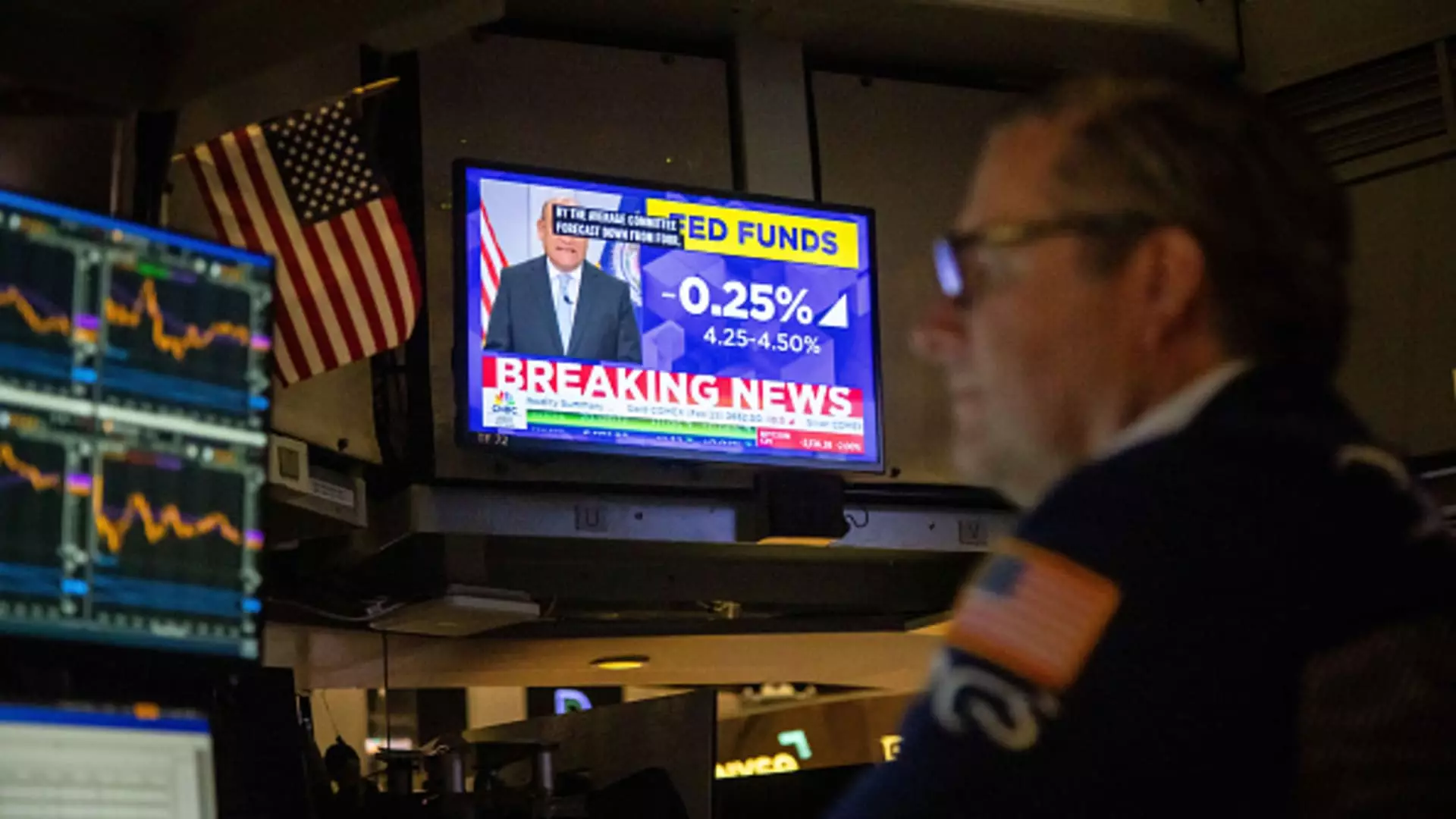In a dramatic turn of events, Wall Street witnessed a significant reaction on Wednesday as the CBOE Volatility Index (VIX) experienced its second-largest percentage increase in history, soaring by an astonishing 74%. This unprecedented surge was largely a response to the Federal Reserve’s announcement regarding its future interest rate strategies, which hinted at a more restrained approach to rate cuts than the market had anticipated. While investors had previously been braced for more aggressive reductions, the Fed’s revised stance indicated that only two cuts were likely in the coming year—a stark decrease from the previously expected four.
This announcement sent shockwaves through the stock market, triggering a massive sell-off. The Dow Jones Industrial Average plummeted by over 1,100 points, marking the culmination of its tenth consecutive loss. Such a downturn is indicative of a broader sentiment of anxiety among investors, who appeared unprepared for shifts in the monetary policy that had seemingly supported the bull market for an extended period.
The VIX, often referred to as Wall Street’s “fear gauge,” is instrumental in gauging market volatility and investor sentiment. When the index breaches the 20 threshold, it typically signals heightened levels of market trepidation. For much of 2023, the VIX had remained below this critical marker, leading industry analysts to grow concerned about the potential for complacency among investors who had become accustomed to buoyant market conditions.
The index is derived from the prices of S&P 500 options, reflecting the cost of purchasing puts and calls. A sharp increase in the VIX generally suggests that investors are scrambling to secure protection against an anticipated downturn, indicating a collective sprint towards risk management strategies. The recent spike reflects a clear sign of investor unease and the powerful implications of the Fed’s policy decisions.
Interestingly, this spike in volatility is not the first of its kind this year. A notable historical event occurred on August 5, 2024, when the VIX experienced its third-largest surge ever, climbing approximately 65% amid fears of a looming recession coupled with financial turmoil from the yen carry trade. This illustrates that the current conditions on Wall Street are part of a broader pattern of volatility driven by macroeconomic factors and investor psychology.
By Thursday, the volatility index had retraced some of its gains slightly, resting just above the 20 mark—signifying that while panic may have subsided momentarily, it does not eliminate the underlying fears within the market. The events of this week serve as a crucial reminder to investors, not only about the sensitivity of market dynamics but also about the unpredictable nature of economic forecasting and central bank maneuvers.
As the financial landscape continues to shift in response to Federal Reserve policies, market participants must remain vigilant in their strategies. With indications of fluctuating interest rates and potential economic recalibrations on the horizon, the significant movements in the VIX offer essential insights into investor sentiment and market stability. It is imperative for investors to stay informed and agile, ready to navigate the turbulent waters of volatility that lie ahead.

